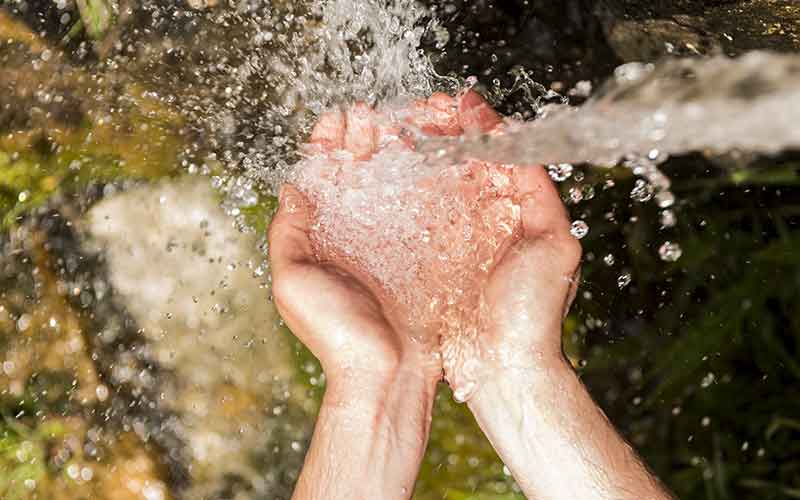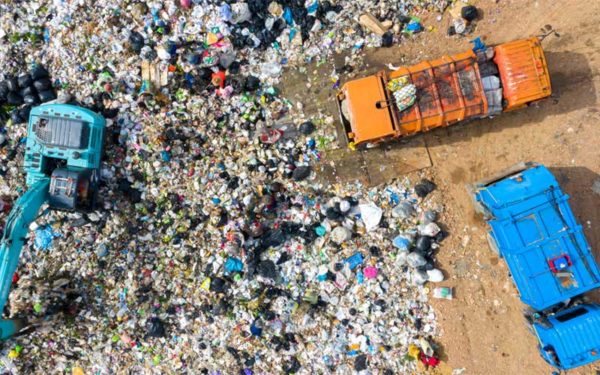
Vermont's state legislature is currently considering a bill that would ban PFAS in food packaging, carpets, and firefighting foam. That’s good news for Vermonters because the EPA has failed to protect the public from exposure to these dangerous chemicals. Photo: Crazymedia via Shutterstock
Toxic “forever chemicals” are everywhere: in our nonstick pans, our food packaging, our water-repellant rain jackets. This dangerous class of chemicals called PFAS (per- and polyfluorinated alkyl substances) got their nickname because these human-made compounds never break down in our environment. Even in small quantities, they can be harmful to human health.
PFAS have shown up in drinking water supplies and private wells in Vermont and across the U.S. Recent testing has detected at least one of these chemicals in over 100 of Vermont’s public drinking water systems. Because of broken federal chemical safety rules, there are no national regulations on PFAS.
In the absence of federal action, Vermont is stepping up. Last year, CLF helped pass a state law requiring state public water systems to test for and treat five toxic PFAS chemicals. However, just getting these substances out of our water isn’t enough – we need to get them out of our everyday products so they can’t contaminate our water in the first place.
Our state legislature is currently considering a bill that would protect Vermonters from these dangerous chemicals by banning PFAS in food packaging, carpets, and firefighting foam. The bill also requires manufacturers to publicly disclose children’s products that contain PFAS. This bill will help keep toxic “forever chemicals” out of our products and out of our drinking water. That’s good news for Vermonters because the EPA has failed to protect the public from exposure to these dangerous chemicals.
PFAS Chemicals Are a Public Health Threat
Many of the consumer and commercial products that contain PFAS end up in the environment or in a landfill, where they can cause water contamination. Recent testing at the Coventry landfill in Vermont, for example, showed a high concentration of these toxic chemicals in leachate, the liquid pollution that seeps from all landfills.
Coventry’s leachate is collected and trucked to wastewater plants for treatment. But those plants cannot remove PFAS. Not surprisingly, testing at these plants shows that PFAS are discharged to our surface waters. They also remain in sludges that end up back on our land, which poses health risks and can contaminate surface and groundwater.
PFAS are suspected carcinogens and have been linked to a host of other health issues, including growth, learning, and behavioral problems in infants and children; fertility and pregnancy issues; and interference with natural human hormones and immune system function.
CLF is fighting to get these chemicals out of our products. Senate Bill No. 295 prohibits the use, manufacture, sale, and distribution in Vermont of food packaging, carpets, and firefighting foam that contain the PFAS class of chemicals. The bill also requires manufacturers of children’s products that contain these dangerous substances to report this information to the state Department of Health, information that would then be made available to the public.
We’re starting with these products because they are some of the most dangerous due to their toxicity, impact vulnerable populations, and can contaminate the environment. Other states have already enacted or adopted commonsense laws or policies to restrict PFAS in some of these products, and safe alternatives are available.
PFAS Bill Builds on Last Year’s Victories
As a result of CLF’s advocacy efforts last year, Vermont public water systems must test for five toxic PFAS and treat unsafe levels of these chemicals. The law also:
- requires these same systems to test for and report concentrations of an additional 13 PFAS,
- includes a process to evaluate the regulation of “forever chemicals” as a class or subclasses,
- requires a comprehensive statewide investigation of PFAS sources, and
- provides the Agency of Natural Resources with additional tools to protect Vermonters from emerging contaminants.
In addition, last June, the Vermont Attorney General filed a lawsuit against manufacturers of toxic “forever chemicals.” These chemical manufacturers – powerful companies like DuPont and 3M – have been aware of the risks for decades, yet have recklessly continued producing PFAS. Chemical manufacturers and polluters that have unleashed these chemicals into the environment must be held accountable for the harm they have caused. The action by the Attorney General should generate resources and compensate the State and public entities for the costs to clean up PFAS contamination.
More Work Needed to Protect Vermonters Fully
Legislation, testing, and the attorney general’s lawsuit are important first steps in protecting our health and our environment from these toxic chemicals. But we have much more work to do to eradicate this threat fully.
Even as the State is making progress on clean up, manufacturers are continuing to add to the problem. There are more than 7,800 PFAS in this class of chemicals – and, despite the known hazards, EPA continues to approve the use of new ones. It is a vicious and dangerous cycle. As long as consumer products and commercial applications use PFAS, the faucet of toxic chemicals will continue to flow in Vermont. We must turn that faucet off, now.
You Can Help Get PFAS Out of Everyday Items in Vermont
It’s not enough to remove toxic PFAS chemicals once they’re in our water – we need to eliminate them at the source.
To help get PFAS out of products, contact your legislators and ask them to vote for Senate Bill No. 295. You can find your representatives here, and they can be reached by calling 802.828.2228 or emailing sgtatarms@leg.state.vt.us.
Together, we can protect our waters, our health, and our environment.



